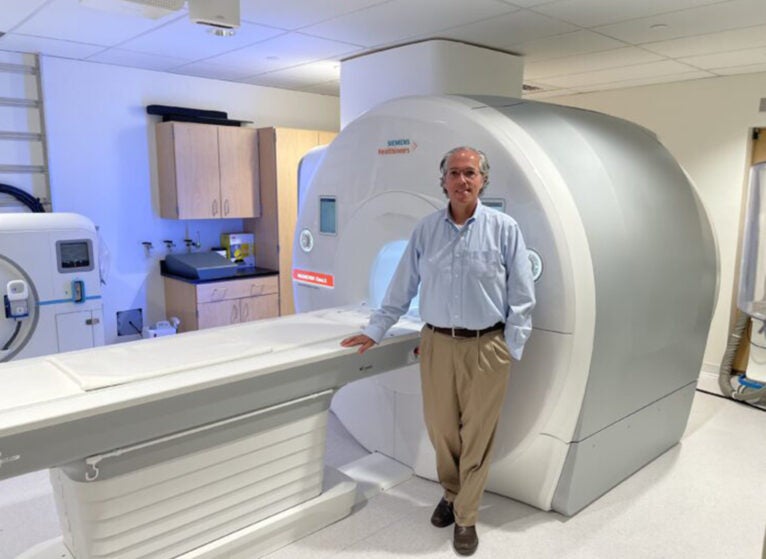

UVA and Military Researchers Seek Better Ways to Identify, Treat Blast-Related Brain Injuries
UVA School of Medicine and Naval Medical Research Command (NMRC) researchers will use a federal Department of Defense grant to better identify, prevent, and treat brain injuries for military personnel caused by repeated blast exposures.
The four research projects funded by the $5.3 million grant will explore the role of the neurovascular unit — the interactions between blood vessels in the brain and brain tissue — in maintaining healthy brain function and how damage to the unit can cause chronic health conditions.
“This is about moving from concern to capability, turning careful science into practical ways to identify, prevent, and treat blast-related brain injury,” says James Stone, MD, PhD, a UVA Health radiologist who is helping lead the research. “Together with NMRC, we’ll map how blast affects the brain’s vasculature and deliver objective measures to help support smart training and precise care for our service members and veterans.”
The project will add to nearly 20 years of research by Stone; Stephen Ahlers, PhD, a retired Navy captain and NMRC researcher who is leading the project; and colleagues that seeks to better understand how regular blast exposures, common in military training and combat, affect the brain over time.
Previous research has shown that frequent, low-level blast exposures from weapons or breaching — the use of explosives to enter buildings or other structures — can cause cumulative brain injuries and subtle but meaningful changes in brain function.
“We are sincerely honored that our collaborative team received a second multi-million-dollar focused program award in recognition of our efforts to understand changes in the brain vasculature after exposure to blast overpressure, especially given the scarcity of funding in this highly competitive environment,” says Ahlers. “We expect that this effort will go a long way to better understand how blast overpressure affects the brain that will generate new biomarkers to assess exposures and treatments to prevent chronic impairments in service members and veterans.”
How Blasts Affect the Brain
These research projects aim to protect long-term brain health in military personnel by:
- Developing non-invasive biomarkers that show blast-induced changes to the brain.
- Helping determine blast exposure limits during training environments.
- Identifying potential treatments.
- Reducing the impact of blast-related brain function and psychological issues among military personnel and veterans.
One study will examine how repetitive blast exposure affects the ability of the brain’s blood vessels to regulate blood flow. Study participants with varying levels of blast exposure will undergo advanced magnetic resonance imaging (MRI) to determine if blood flow is impaired in military personnel with higher lifetime blast exposure. Researchers also aim to identify markers that could serve as early indicators of blast-related brain injury.
The second study will investigate how repeated blast exposure affects the brain’s glymphatic system, which removes waste products from the brain. The study will use MRI scans of military study participants to determine if disruptions to the glymphatic system cause declines in brain function. The results could establish new imaging-based measures for assessing subtle brain health effects from repetitive blast exposure and lead to strategies for protecting or rehabilitating the brain.
Another study will assess how repeated exposure to low-intensity blasts affects the cells that make up the neurovascular unit, with that better understanding hopefully leading to new therapies to restore brain and blood vessel health.
The final study will work to identify molecular indicators of blast exposure and test strategies to prevent injuries to blood vessels. Researchers will focus on the endothelial glycocalyx, a microscopic structure that lines blood vessels and regulates blood flow.
Latest News



